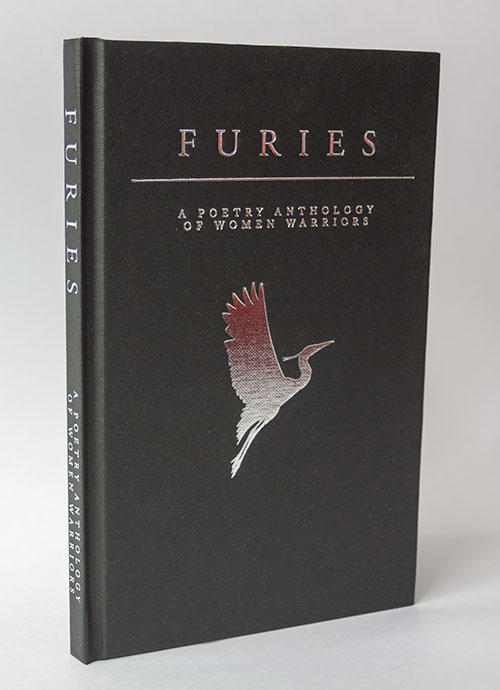Speed Dating Two Literary Magazines: A Cappella Zoo #5 & Willow Springs #66
-Reviewed by Claire Trevien–
You might remember the Sabotage review ‘Speed Dating Four Poetry Pamphlets’ – it’s now time to give two poetry and fiction magazines the same treatment! As before, I will be superficially judging the ‘candidates’ on their value for money and give you a quick trip inside their brain.
Who?
So in other words: a veteran versus a newbie. Willow Springs is a bi-yearly print journal that has been going since 1977. A Cappella Zoo is a bi-yearly web and print journal since autumn 2008.
In its 30+ years, Willow Springs has published some impressive names, such as Jorge Luis Borges, WS Merwin, Charles Bukowski, and Sabotage favourite, Mark Halliday.
As a newer arrival, A Cappella Zoo concentrates on magic realism and slipstream styles of writing ‘from around the world’. It prints its issues first then gradually releases the material online.
Both magazines are based in the United States.
How Much?
A Cappella Zoo #5 boasts 15 stories, 14 poems, 2 artists and 5 countries for $4
Willow Springs #66 boasts 18 poems, 3 fiction stories, 1 non-fiction story and an interview for $10
What?
First: I must mention a subject that recurred in both magazines often enough that it bears mentioning: birds. Birds of all types, sometimes metaphorical, were a key theme; maybe avian flu was to blame? I don’t mind winged creatures but after one too many mention of flying the nest I was harking after a good canine tale.
In light of (fairly) recent complaints that not enough women are published in literary magazines I was also heartened to find this was quite the reverse in these US publications, with a majority of female writers in Willow Springs #66 and an equal split in A Cappella Zoo #5.
Willow Springs #66 Highlights:
Katie Cortese ‘International Cooking for Beginners’ gets first prize: a captivating yet frustrating tale of stigmatization, prejudices and fantasies. It is frustrating because of the non-dits that it peppers throughout the tale like brief peeks through venetian blinds. What Cortese is best at is sketching small-minded individuals encountering alien experiences, but without reducing them to buffoons.
Finding a stand-out for the poetry was a harder task as I was drawn to several poems, all very different from each other with their own defects and qualities. It seems fair to call out Kathleen Flenniken’s ‘A Great Physicist Recalls the Manhattan Project’. The poem deals with John A. Wheeler’s life, a man I know nothing about save what the poem tells me, which is quite sufficient. It is both personal and impersonal, blending tender observations with scientific matter of factness:
‘I watched my youngest climb as the sun blazed behind her golden hair
and realized that halos were not a painter’s invention
but a consequence of nature. Have you ever held plutonium in your hand?’
Another stand-out is Albert Garcia’s poem ‘Dig’. Narrated by a ten year old boy who happens on the grave of an Indian child, this moment of reckoning escapes the pitfalls of twee with its sober descriptions. The ending in particular, of the father shoveling earth back on the bones, ‘the sounds / of a straining body, of breathing’, is masterful.
There are no bad pieces as such in this magazine’s issue, but nor is there really any genius. Even the stand-outs that I’ve mentioned lack that certain oomph, that certain kick that makes you tingle all over. Willow Springs #66 plays it too safe for my liking, but at the same time, it’s satisfying to read works knowing you won’t cut yourself.
A Cappella Zoo #5:
Amongst the short stories ‘Birds Every Child Should Know’ by Kate Riedel stands out. It doesn’t suffer, like many other works in this magazine do, of the clipped-sentence syndrome, a tiresome technique used in an effort to heighten mystery. It is attempted by many but only mastered by a few. This story manages the right balance of information and wonder, and twists your heart in a knot in the process.
A poetry highlight is Lisa Grove’s ‘The Cat and the Fiddle’. Sensuous, deliciously crafted, it manages to pull together in a few lines a heavy mix of images: sex, dishwashing, car crashes, eating, a meditation on the future, under the arc of hey diddle diddle, without feeling contrived:
‘Our blood may ooze
over the plate of pavement like syrup spilling down
pancakes, without the time to even regret not licking
the sweet maple of our skin’
Other stand-outs are Anna Jaquiery’s ‘Fragmentation’, a mosaic of a poem that tries to pin the unpinnable, and Nancy Gold’s ‘Showtime’, a tale of freakshows, with a character worthy of a Victor Hugo novel, and a touch of Icarus.
A Cappella Zoo’s authors do not lack imagination, but it is the execution that lets several pieces down: underworked, under-thought, buried under too many contrivances to let their worth shine through. The poetry in particular suffers, struggling to manage that magic blend of clarity, ambiguity and storytelling it aims for.
In Conclusion
I wasn’t bowled over by either magazine, though both had their highlights. Willow Springs #66, the good looking elderly gentleman, seduced me first with its old school ways and reliably good poems. The cover and paper are of a superior quality too. However, A Cappella Zoo #5, like an eccentric sailor, has been craftily winning me over with its rich tales. The quality is more variable in A Cappella Zoo #5 but the imagination on display is intriguing enough to make the stories and poems that do work, shine brighter.


